Back in 1994, I spent time — far, far too much time — trying to make the combat system in this game work for me; I loved Captain Picard, Commander Data, and Lieutenant Worf that much, but it’s so counterintuitive, so tedious, and so time-consuming, that it ruins the entire experience — even though it only makes up about 10% of the game’s content.
The majority of the game, and the best part of the game, are the Away Missions, ship-to surface objectives that require a crew of several officers. Some are combat based, but most are not — one of them has you repairing a computer’s circuit board. You choose four people for any away mission — it’s a good idea to have a mixture of different skilled people on your squad. Worf has a great Combat rating. Crusher, of course, can heal her fellow officers. Geordi’s VISOR lets him see in the dark — a great skill to have if the power is down. And Troi can talk to unfriendly people, in case someone tries lying to you. You can even bring a Red Shirt or two down to the surface, and if they die, the Away Team will appropriately leave their dead bodies where they fall. Just don’t bring Picard down to the surface — if he gets critically injured, the game is over.
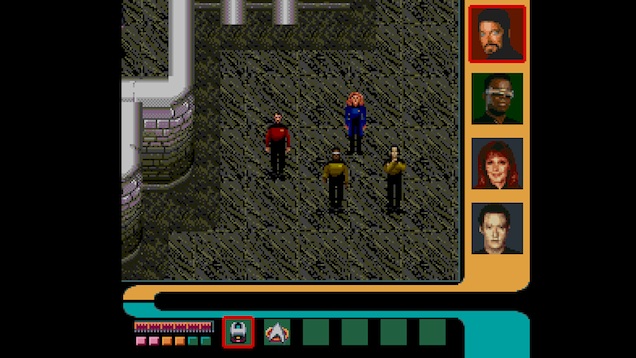
This is the fun part of the game — the best Away Missions can take over an hour to clear, and they’re super involved and team-based. So it’s unfortunate that this stuff is overshadowed and interrupted by random battles against Romulan Warbirds, which uncloak at random times and surprise attack you. The Red Alert klaxon goes off, and suddenly, you’re staring at Worf’s tactical control panel. They always attack when you’re travelling to your next mission, and to advance past these battles (and thus, get to the next mission), you have to master some of the worst controls that I’ve experienced on the Super Nintendo.
So here’s an average battle screen:
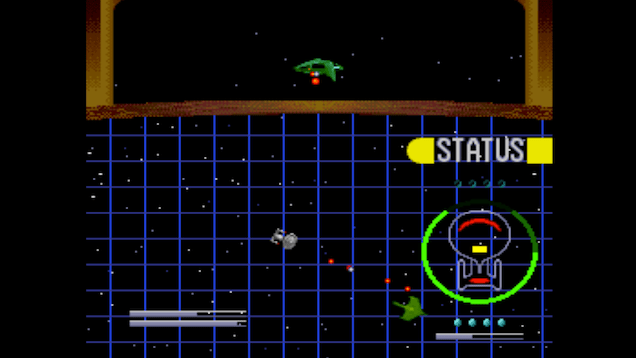
The Enterprise’s status is on the right — the green is your shield, which can deteriorate over time. The red are your charged Phasers. The yellow is your auxiliary power — it can be transferred to your Shield or your Phasers. The blue circles are your Photon Torpedo tubes — you have four tubes in the fore and aft of the ship, for a total of eight torpedoes at a time. When the tube is loaded, the circle turns blue. And lastly, the gauge at the bottom shows how many photon torpedos you have left. You have 200+, and if you run out, you have to go to a Starfleet Base to restock.
The two bars on the left are the Warbird’s stats — the top bar shows the status of their Shield, and the bottom bar shows the status of their Hull. It’s an attractive interface, but looks are deceiving.
Common sense would dictate that pushing Up on the controls would move the ship up, and Left would move the ship left. But that’s not what happens. Up moves your ship forward. Down moves your ship backwards. But Left and Right rotate the ship counterclockwise or clockwise. So, if you want the ship to move to the lower right hand side of the screen you have to rotate the ship to point in that direction, and then press Up to move down.
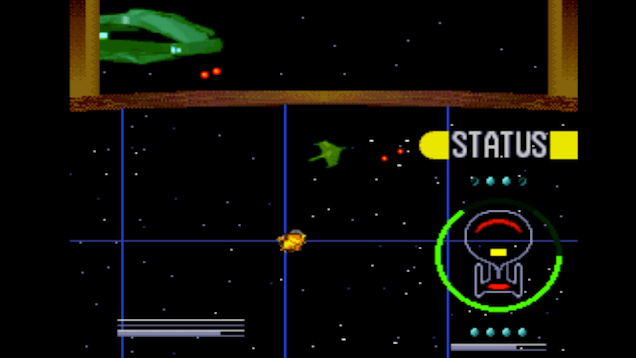
But there’s more. The Enterprise, rather than moving around the grid, is fixed in the center of the grid; thus instead of the ship moving according to your instructions, the map moves. This makes it even more confusing. When you’re moving up, the map moves down. And when you’re moving right, the map moves left.
This is no way to pilot a ship, let alone handle oneself in battle. Counterintuitive controls, and the delay of turning the ship around before you can actually move it, feels unfair, especially since the AI-controlled Warbird can fly circles around you and can also fire eight missiles at a time. Sometimes, instead of attempting to dodge the torpedoes, you’re better off rotating your ship. That way, at least you’ll take the hits on the parts of your ship that are least damaged. Flying is often designed to be intentionally difficult (like a ‘real’ starship?), but in Future’s Past it doesn’t capture the spirit of the TV show when the Enterprise is constantly outgunned. On the TV show, the Enterprise has the ethos of Starfleet’s moral principles, and visually conveys that strength. But in the video game, that ethos is compromised when any Romulan Warbird can uncloak and nearly destroy it.
If the end is nigh, you have two options. One, you can embrace your inner Klingon and fight to the death, which means that you’ll see a screen that looks like this:
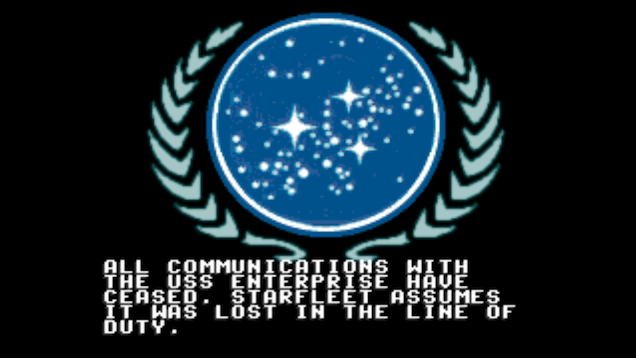
Or, you can surrender, which means that one of two things will happen. The first is the more preferable of the two — the Romulans admire your bravery and will let you off the hook with a condescending warning:
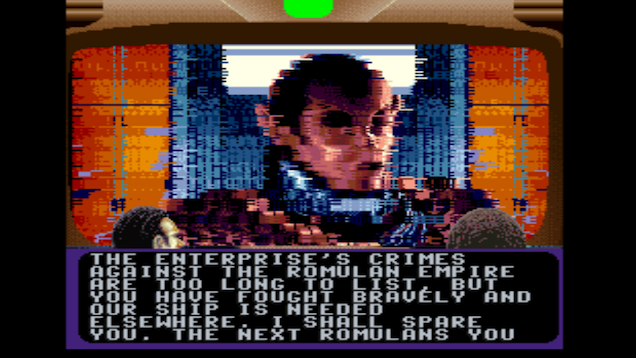
The second is that the Romulans will take the Enterprise into their custody, and will imprison you and your entire crew. Picard expresses a hope that they will be treated with dignity and civility, but that’s overly optimistic:
If and when the enemy’s hull drops down close to zero, he’ll hail you, signifying his surrender. He’s at your mercy — you could blow up his ship. You could also open the hail, and when you get back on the bridge you could answer it and accept his surrender.
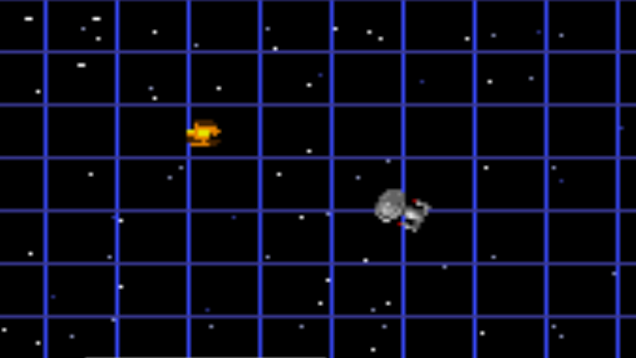
But if you blow up his ship, or answer his hail, that usually triggers another Warbird that proceeds to kick your hobbled arse. You receive no positive reinforcement for winning the battle — if anything, you’re being punished for doing the right thing and for adhering to the game’s mechanics. It feels cheap and counterintuitive; that the actual game (not the Romulans) is antagonistically working against your success.
So you might head over to Engineering instead, to repair the ship of any damages — that way, at least you’ll be ready for a surprise attack.
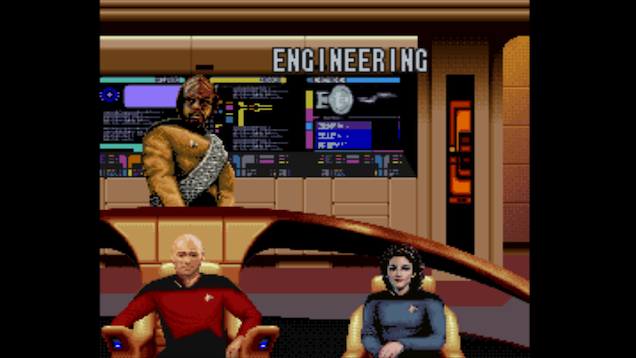
But unfortunately, the act of repairing everything takes forever. How long, exactly? Here’s a picture of a catastrophically damaged port shield — I gave him the maximum amount of resources (represented by the blue bar at the top of the screen shot). And still, it took an unholy amount of time to repair. Here’s the damage bar at the beginning.
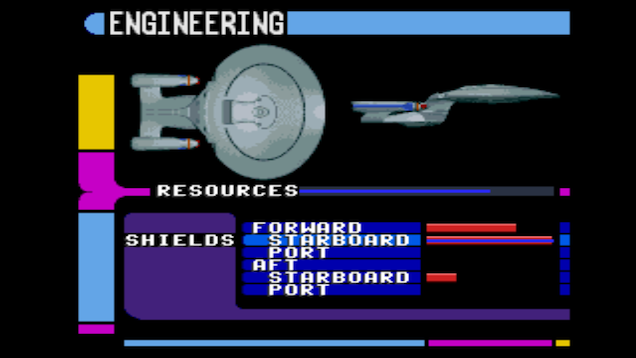
And here it is two minutes later:
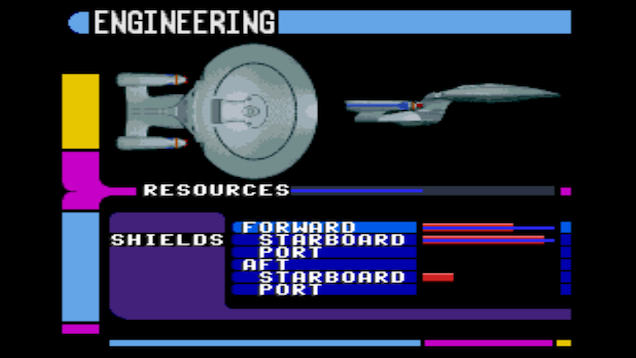
And here it is five minutes later:
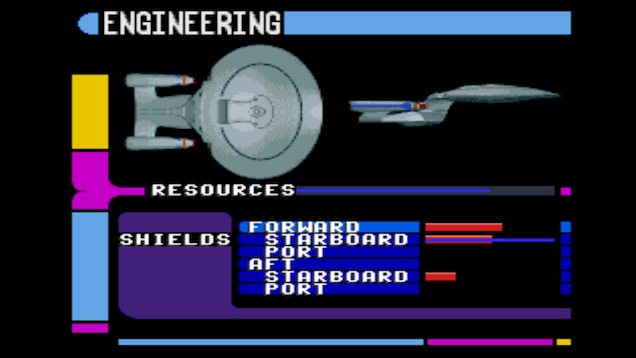
And five minutes after that:
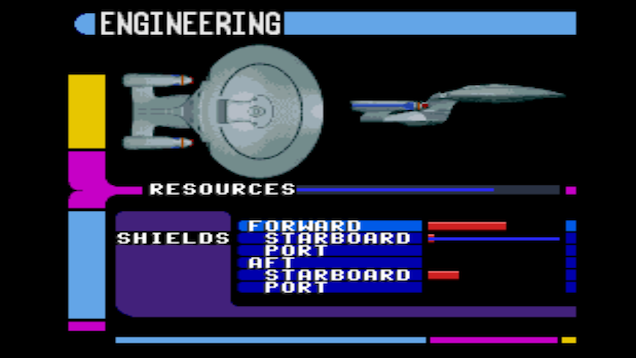
All told, it took the game 14 minutes to repair a single component of the ship. Now extrapolate that to the rest of the damaged ship. Even if you’re constantly moving resources to gain the greatest amount of efficiency, it is entirely possible to spend upwards of 30-40 minutes doing repairs. It’s ridiculous that Battle Mode, a mini-game placeholder between the actual Away Missions, could end up hogging so much time.
There’s nothing to do during all of this but stare at these bars slowly tick down. If you try to go on a mission, Picard admonishes you for not answering the hail. If you head over the to the conference room, Picard advises you of the same thing.
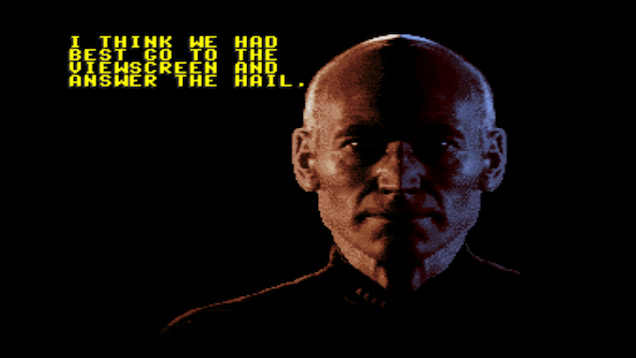
The first time I saw this, I assumed that Picard was reassuring me that I was safe. But no. I answered the hail, and Boom! Second Warbird. Repairs to the hull weren’t even close to being done. I was destroyed in under a minute.
The worst experience I’ve ever had with this game was fighting three consecutive Warbirds. Fight the first one, repair the ship, answer the hail. Fight the second one, repair the ship, answer the hail. Fight the third one, repair the ship, answer the hail. All told, it took me 90 minutes to complete the battle sequence — I could have watched a movie in the time it took me to repair the ship.
A key hurdle for the game designers must have been the same dilemma that faces any producer/writer/director of Star Trek — how does one balance the intellectualism and moral heft of Trek with the action and weirdness that one might expect from science/fantasy fiction?
Drift too far towards the former, and you please a very limited, dedicated audience. Drift too far towards the latter, and you get a mainstream crowdpleaser that pisses off the diehards. J.J. Abrams figured this out, firsthand, when he made Star Trek Into Darkness, and the Trek-faithful went into conniptions. Justin Lin now has to make sure he does not compensate in the other direction when he makes Star Trek Beyond.
But many Trek video games never managed to balance the two extremes. The Elite Force series was, for all intents and purposes, a straight up first-person shooter — there were some RPG elements, but none of the ‘no force unless absolutely necessary’ principles that guides most Star Trek media — none of the murky moral territory that separates Star Trek from the schlock. But perhaps that’s for the best. Because when you try to half-arse both, you get games like Future’s Past.
Kevin is an AP English Language teacher and freelance writer from Queens, NY. His focus is on video games, American pop culture, and Asian American issues. Kevin has also been published in VIBE, Complex, Joystiq, Salon, PopMatters, WhatCulture, and Racialicious. You can email him at kevinjameswong@gmail.com, and follow him on Twitter @kevinjameswong.
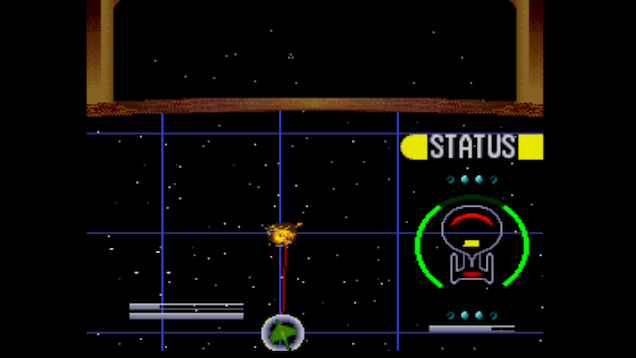
Comments
3 responses to “Star Trek: The Next Generation – Future’s Past Has The Worst Combat System”
I always wondered how you play that game! Good read.
This article brings up bad memories! My cousin and I were terrible at the space combat and would try for hours and hours to beat this game.
I don’t remember if we ever did, but I’m pretty sure we didn’t 🙁
The moment I read Star Trek video game for some reason my eyes glaze over as I am sucked back to Star Trek Klingon Academy, which was the best damn star trek game I’ve played. Rise through the academy while commanding a star ship, set just before The Undiscovered Country and has lots of FMV of Christopher Plummer playing Chang setting up his character for the film.
I remember that game! I actually beat it too!!! Once you get used to it and if you have plenty of time on your hands it isn’t so impossible.. Lessons learned from that game is have some game genie fun while you are training yourself to beat it! If he thought the Romulans are a pain wait till he gets a load of the GUARDIAN ships… One that masters torpedoes, and the other who is a master at phazors… But then again he also needs to be careful of the GORN who are tougher than the Romulans too… Be sure to write down the password also to avoid frustrations and hassles… Worf’s combat sequences reminded me of asteroids…. Here is a tip.. Use auxiliary power for shields, distribute your resources evenly throughout the ship before battle.. Use your phazors to damage the ships the enemy ships shields carefully fire your torpedoes and as the enemy ship gets weaker use your phazors to gently knock down their ships health so they can surrender… Really, it is all in the instruction booklet… I Did beat the game without game genie and I was glad I could finally put the game away and never have to go back to it… It wasn’t one of my well liked games admittedly… There were far worse games by far… Like Beetle juice by LJN I never did beat that one straight without game genie, but Beetle juice is really saved for Halloween… Anyway I am glad though I was able to beat that star trek game eventually without game genie… But I never would have learned the ropes without game genie, so it worked out in the end…
I actually enjoyed the space combat. Perhaps I had a difference experience as I was playing the Sega Genesis version, however I loved taking on fleets of Warbirds. The reason you had to fight so many is because you delivered a killing blow against a defeated ship. If you let them go instead they didn’t come after you in force.
I have many of the same memories, after each fight I would put my repair crews to work then go hand have a drink, etc. It would be 15 minutes or so before repairs were done, and you couldn’t save until the whole combat sequence was finished.